GITR and TIGIT immunotherapy provokes divergent multicellular responses in the tumor microenvironment of gastrointestinal cancers
- PMID: 38008725
- PMCID: PMC10680277
- DOI: 10.1186/s13073-023-01259-3
GITR and TIGIT immunotherapy provokes divergent multicellular responses in the tumor microenvironment of gastrointestinal cancers
Abstract
Background: Understanding the mechanistic effects of novel immunotherapy agents is critical to improving their successful clinical translation. These effects need to be studied in preclinical models that maintain the heterogenous tumor microenvironment (TME) and dysfunctional cell states found in a patient's tumor. We investigated immunotherapy perturbations targeting co-stimulatory molecule GITR and co-inhibitory immune checkpoint TIGIT in a patient-derived ex vivo system that maintains the TME in its near-native state. Leveraging single-cell genomics, we identified cell type-specific transcriptional reprogramming in response to immunotherapy perturbations.
Methods: We generated ex vivo tumor slice cultures from fresh surgical resections of gastric and colon cancer and treated them with GITR agonist or TIGIT antagonist antibodies. We applied paired single-cell RNA and TCR sequencing to the original surgical resections, control, and treated ex vivo tumor slice cultures. We additionally confirmed target expression using multiplex immunofluorescence and validated our findings with RNA in situ hybridization.
Results: We confirmed that tumor slice cultures maintained the cell types, transcriptional cell states and proportions of the original surgical resection. The GITR agonist was limited to increasing effector gene expression only in cytotoxic CD8 T cells. Dysfunctional exhausted CD8 T cells did not respond to GITR agonist. In contrast, the TIGIT antagonist increased TCR signaling and activated both cytotoxic and dysfunctional CD8 T cells. This included cells corresponding to TCR clonotypes with features indicative of potential tumor antigen reactivity. The TIGIT antagonist also activated T follicular helper-like cells and dendritic cells, and reduced markers of immunosuppression in regulatory T cells.
Conclusions: We identified novel cellular mechanisms of action of GITR and TIGIT immunotherapy in the patients' TME. Unlike the GITR agonist that generated a limited transcriptional response, TIGIT antagonist orchestrated a multicellular response involving CD8 T cells, T follicular helper-like cells, dendritic cells, and regulatory T cells. Our experimental strategy combining single-cell genomics with preclinical models can successfully identify mechanisms of action of novel immunotherapy agents. Understanding the cellular and transcriptional mechanisms of response or resistance will aid in prioritization of targets and their clinical translation.
Keywords: Colon cancer; GITR; Gastric cancer; TIGIT; Tumor microenvironment; scRNA-seq.
© 2023. The Author(s).
Conflict of interest statement
The authors declare that they have no competing interests.
Figures
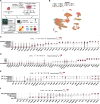
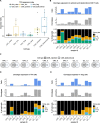
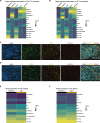
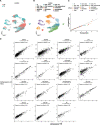
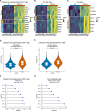
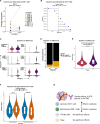
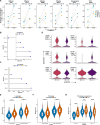
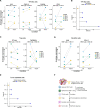
Update of
-
GITR and TIGIT immunotherapy provokes divergent multi-cellular responses in the tumor microenvironment of gastrointestinal cancers.bioRxiv [Preprint]. 2023 Mar 15:2023.03.13.532299. doi: 10.1101/2023.03.13.532299. bioRxiv. 2023. Update in: Genome Med. 2023 Nov 26;15(1):100. doi: 10.1186/s13073-023-01259-3. PMID: 36993756 Free PMC article. Updated. Preprint.
References
Publication types
MeSH terms
Substances
Grants and funding
LinkOut - more resources
Full Text Sources
Molecular Biology Databases
Research Materials

